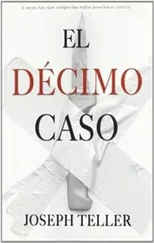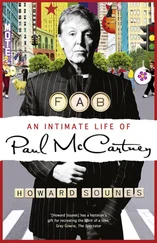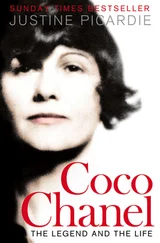A good fraction of Gabrielle’s clients were young women in this category: tomboys with short hair who wished for emancipation. Their wealth and privilege made them appear liberated, but a few recognized that there was more to independence than pretending to it by simply taking their father’s, their spouse’s or their lover’s money.
Gabrielle was present at many of the rehearsals for Le Train Bleu, and was by now well versed in the infighting and tensions ever present during the making of a Diaghilev production. With the Ballets Russes, Diaghilev had created around him, as he always did, a kind of loose extended-family atmosphere where, whatever their differences, ultimately they pulled together. Again generated by Diaghilev, an edginess and energy arising out of experiment was what his company of “sacred monsters” thrived upon, often spilling over into near-chaos. While finding them all infuriating, Gabrielle, like her friend Cocteau, was also stimulated by the Russians’ very un-French way of going about things. Logistics, money, the sets, the music, the fanatical dedication, the love affairs, treachery, high artistry and rampant emotion — all typical elements, of course, with their own creative and destructive possibilities in any kind of production. But Diaghilev and the Ballets Russes took them to the limit. The Russians were so entirely different from the cultivated, artistically minded French bourgeoisie and aristocrats. At a certain level, they were simply more interesting; more exotic, more authentic and richer in possibility than the immensely self-conscious refinement found in the Parisian salons.
Diaghilev, a formidable despot, was whimsical, sarcastic and vindictive. Practicing outrageous favoritism, he was also endowed with extraordinary artistic flair. The company might sometimes have grown tetchy at his despotism, but they understood it, and wouldn’t have continued working for him if they hadn’t recognized his great talent. Typically working close to catastrophe meant that it was never quite certain until the last moments whether a Diaghilev production would actually take its bow in front of a first-night audience. And Le Train Bleu was no exception.
At the dress rehearsal, almost everything was wrong. In Gabrielle’s case, this meant half the costumes. Serge Lifar would later say, “They were not costumes conceived for dancing.” Gabrielle simply hadn’t appreciated the necessity of adapting her clothes to encompass the choreography. Unable to try them before the dress rehearsal, the dancers discovered it was impossible to move in them properly. The female lead, Lydia Sokolova, wore Gabrielle’s bright pink knitted swimsuit, but it was loosely fitted and made it difficult for her partner to get a hold on her in the various throws and catches. (Sokolova — real name Hilda Munnings — became the first English member of the Ballets Russes in 1913, dancing the demanding female lead in the 1920 revival of The Rite of Spring. ) Sokolova’s fake-pearl stud earrings — to become one of the fashion accessories of the twenties — were so heavy that, apparently, she could barely hear the music. And the head-hugging bathing cap Gabrielle had her wear soon became a must for any fashionable swimmer.
Diaghilev would also ask Gabrielle to step in on a number of productions to update the dancers’ costumes. This included bringing right up to date the fashionable hostess in Diaghilev and Poulenc’s Les biches (1924) and redesigning the three muses’ costumes for Apollon musagète (1929). These were beautifully simple tricot tunics, with neckties from the House of Charvet winding around the dancers’ bodies. In these productions, for the most part, Gabrielle was uninterested in personal glory and became just as involved as the rest of the company in contributing to their success.
The problems with Le Train Bleu ’s dress rehearsal appeared insurmountable to Diaghilev, and he had fled up to the last row of the balcony, asking what on earth they could put on that evening instead. However, all the dancers and the stagehands, and Diaghilev, Nijinska, Cocteau, Gabrielle and the dressers, stayed on in the theater that afternoon and effectively remade the ballet. Among the radical changes, Gabrielle pulled apart and redesigned half of her modish beach clothes. These were then resewn by the dressers in a very few hours. Somehow, everything was done, the curtain went up and on that evening of June 13, 1924, Le Train Bleu was judged as “distinctly new and modern,” and a great success.
With le tout Paris and a good number of artists in the audience, Cocteau and Diaghilev had brought off a mix of theater, dance, music, pantomime and satire. It fell way outside any classical definition of ballet, whose traditional siting had been in the unreal worlds of myth or fairy tale. It wasn’t simply that these two agents provocateurs, Diaghilev and Cocteau, had freed ballet and produced a spectacle based on “the powerful charm of the pavement.” As in Parade, they had once again created a new and entirely modern kind of theatrical performance. They had made another firm step in the development of modernist art, based above all on aspects of contemporary life. In this context, it was entirely appropriate that the couturier Coco Chanel, who was synonymous with modernity, should be the person who designed the ballet’s costumes.
Integral to Diaghilev’s obsession with every aspect of his company’s performances was his fierce perfectionism about his dancers’ costumes. As a result, during the twenties, Gabrielle and Misia Sert became his extra “eyes.” Acting in a sense as superintendents of taste, they had the last word on the “correctness” of colors, lengths, decoration and the general design of the costumes. And following Gabrielle’s first mistakes, most important, they asked the question, did the costumes “work” in movement?
Between 1922 and 1937, Gabrielle designed the costumes for several more Cocteau productions, including Orpheus, Oedipus Rex and The Knights of the Round Table . She was also invited to make the costumes for several films, such as Jean Renoir’s famed La Règle du jeu ( The Rules of the Game ) in 1939. Renoir’s biting satire of French upper-class society, evoking the country’s disjointedness in the lead-up to the Second World War, is regarded by many as one of the greatest films ever made. Gabrielle could present herself as opinionated in the extreme, yet she spoke very little of the work she carried out for the theater and films. Over the years, interviewers would ask about some of the remarkable performances for which she had made the costumes, an activity so different from her accustomed working life. But Gabrielle remained frustratingly unforthcoming, hardly referring to the illustrious company present at opening nights or to her involvement in these important works of art. When asked later about the first night of Le Train Bleu, for example, she wanted only to recall the artists. By implication, when it came to art, for Gabrielle, high society didn’t matter.
For Gabrielle there was an absolute distinction between the skills and technique of the artisan, as opposed to the workings of an artist. While she herself was always staunchly opposed to calling herself an artist, one also remembers she was a woman of paradox.
As the twentieth century wore on and the distinction between artist and craftsman became ever more blurred, Gabrielle found this mistaken and pretentious, insisting ever more vehemently that she was only an artisan, a dressmaker and not an artist. She declared that fashion should be discussed “without poetry, without literature. A dress is neither a tragedy, nor a painting; it is a charming and ephemeral creation, not an everlasting work of art.” 1She insisted that while couture may have an awareness of art, it is only a technique, a business. Whatever the success of their creations, Gabrielle believed that did not “justify couturiers persuading themselves or thinking of themselves — or dressing or posing — as artists.” 2
Читать дальше












